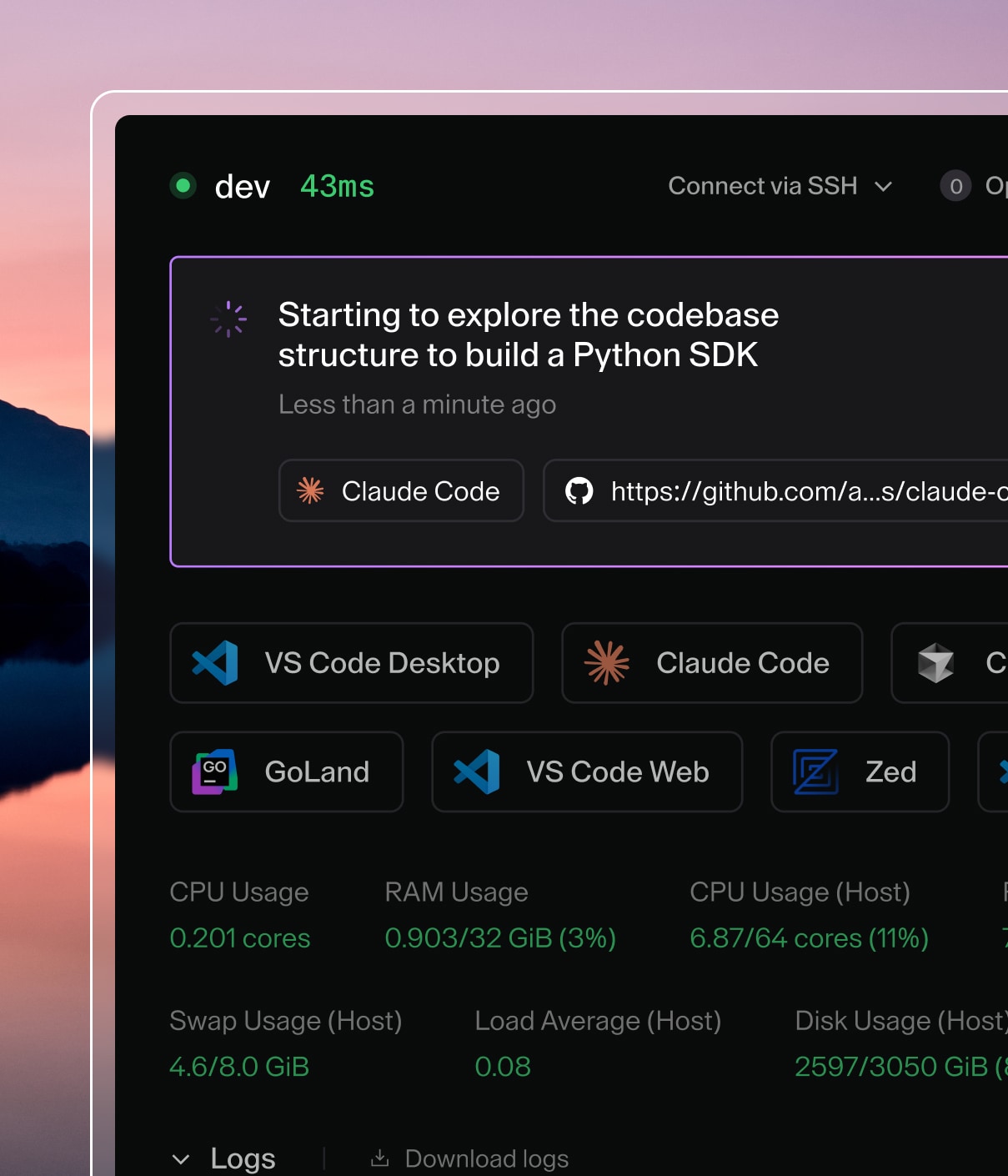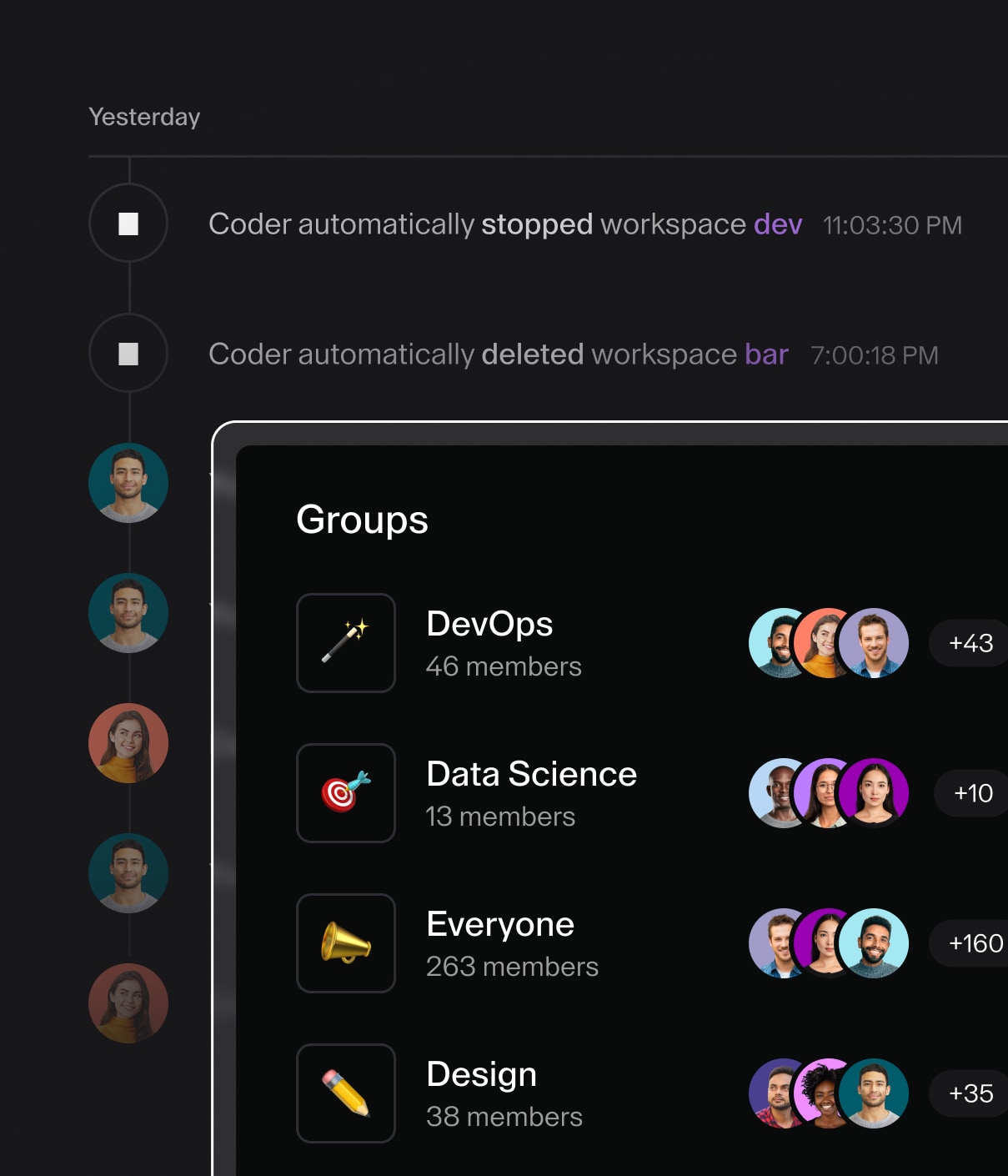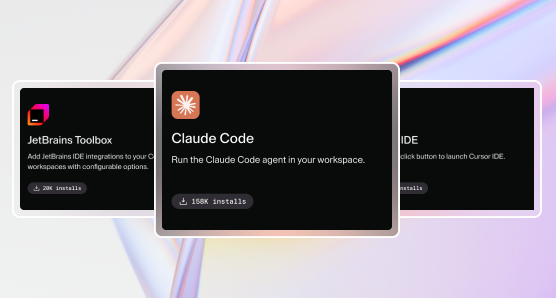-
Install and authenticate the Coder CLI.
-
Run the following to provision a new Kubernetes workspace provider (be sure to replace the placeholders as necessary):
coder providers create kubernetes [name] --namespace=[namespace] --cluster-address=[clusterAddress]Parameter Description nameThe name for the workspace provider you'd like provisioned namespaceThe namespace in which to provision workspaces. cluster-addressThe address of the Kubernetes control plane; find using kubectl cluster-infoExample usage:
coder providers create kubernetes my-provider --namespace=my-namespace --cluster-address=https://255.255.255.255`To create a new EC2 workspace provider:
coder providers create ec2 [name] --access-key-id=[access-key-id] --secret-access-key=[secret-access-key]Parameter Description nameThe name for the workspace provider you'd like provisioned access-key-idThe AWS access key associated with your account. secret-access-keyThe AWS region where the EC2 instances should be created. coder providers create ec2 my-provider --access-key-id=AKIAIOSFODNN7EXAMPLE --secret-access-key=wJalrXUtnFEMI/K7MDENG/bPxRfiCYEXAMPLEKEY -
Once you've provisioned the workspace provider, deploy it to your Kubernetes or EC2 cluster.
Ensure that you're connected to the cluster you're deploying to, and run the provided
helm upgradecommand; it should look something like the following, but with the placeholders filled with values appropriate to your deployment:helm upgrade coder-workspace-provider coder/workspace-provider
--version=
--atomic
--install
--force
--set envproxy.token=
--set envproxy.accessURL=
--set ingress.host=
--set envproxy.clusterAddress=
--set cemanager.accessURL=WARNING: The 'envproxy.token' is a secret value that authenticates the workspace provider; make sure that you don't share this token or make it public.
You can set additional values of the Helm Chart to customize the deployment further.
AI-native Development
Coder powers secure, scalable development across key industries — automotive, finance, government, and technology — enabling faster builds, tighter compliance, and seamless AI adoption in enterprise-grade cloud environments.
Industries


